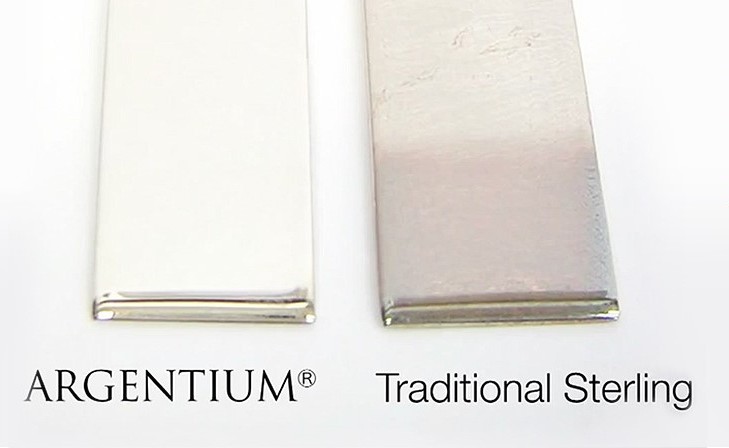Sterling silver has been around for hundreds of years, but argentium silver is a new alloy that provides a tarnish resistant, brighter alternative.

Argentium Silver vs. Sterling Silver: Which One Should You Choose?
When shopping for fine jewelry or precious metal items, you’ll often encounter two popular options: Argentium Silver and Sterling Silver. While both are stunning choices for jewelry lovers and artisans alike, they have distinct properties that make them unique. Let’s dive into what sets these two types of silver apart and which might be the right choice for your needs.
What is Sterling Silver?
Sterling Silver has been a staple in jewelry and decorative items for centuries. It is an alloy made of 92.5% pure silver and 7.5% other metals, typically copper. This combination strengthens silver, which is naturally soft and prone to bending or scratching when pure.
Key Features of Sterling Silver:
- Durability: The addition of copper makes it strong and suitable for daily wear.
- Appearance: Sterling Silver has a bright, shiny finish, but it requires regular polishing to maintain its luster.
- Tarnish: Over time, Sterling Silver can tarnish, developing a dull, darkened surface due to a reaction with chemicals and moisture in the air.
Sterling Silver is loved for its traditional beauty and accessibility, but its susceptibility to fire stain, tarnish and required upkeep can be drawbacks for some.
What is Argentium Silver?
Argentium Silver is a relatively modern alternative to traditional Sterling Silver. It’s also an alloy, but it contains at least 93.5% pure silver (sometimes 96%) and replaces some of the copper with germanium. This small change makes a big difference in the alloy’s properties.
Key Features of Argentium Silver:
- Tarnish-Resistance: Thanks to germanium, Argentium Silver is highly resistant to tarnish, staying shiny longer with minimal maintenance.
- Hypoallergenic: It is less likely to cause allergic reactions, making it ideal for sensitive skin.
- Strength: Argentium is slightly harder than Sterling Silver, which enhances its durability.
- White Hot Glow: It has a natural bright white hue and greater reflectivity, giving it an extra brilliance compared to Sterling Silver.
- Eco-Friendly: Argentium Silver is often made from recycled materials, appealing to environmentally conscious buyers.
- No Fire Stain: This is a common issue with Sterling Silver. During soldering sometimes the silver can get too hot and cause the copper to separate from the alloy and rise to the surface, staining the silver. This doesn’t happen with Argentium Silver because it has a much lower copper content.
While Argentium is a step up in terms of ease of care and visual appeal, it is typically more expensive than traditional Sterling Silver due to its enhanced properties.
Comparing Argentium and Sterling Silver
| Feature | Sterling Silver | Argentium Silver |
|---|---|---|
| Silver Content | 92.5% | 93.5%-96% |
| Durability | Durable with regular maintenance | Slightly harder and more durable |
| Tarnish Resistance | Requires frequent polishing | Highly tarnish-resistant |
| Color | Bright and shiny | Brilliant white with extra shine |
| Skin Sensitivity | May cause irritation for some | Hypoallergenic |
| Price | More affordable | Slightly more expensive |
| Eco-Friendliness | Varies | Often made with recycled materials |
Which One is Right for You?
The choice between Argentium and Sterling Silver largely depends on your lifestyle, preferences, and budget.
Choose Sterling Silver if:
- You appreciate tradition and don’t mind occasional polishing.
- You’re looking for a more budget-friendly option.
- You love the timeless appeal of classic silver.
Choose Argentium Silver if:
- You want a low-maintenance, tarnish-resistant option.
- You have sensitive skin and need hypoallergenic jewelry.
- You prefer an eco-friendly material with modern properties.
Final Thoughts
Both Argentium and Sterling Silver have their strengths, and neither is inherently better than the other. Whether you’re buying a new piece of jewelry or crafting one yourself, understanding the differences can help you make a more informed decision.
No matter which silver alloy you choose, both bring elegance, beauty, and versatility to your collection. And that’s the real silver lining!
